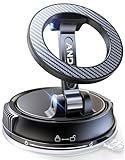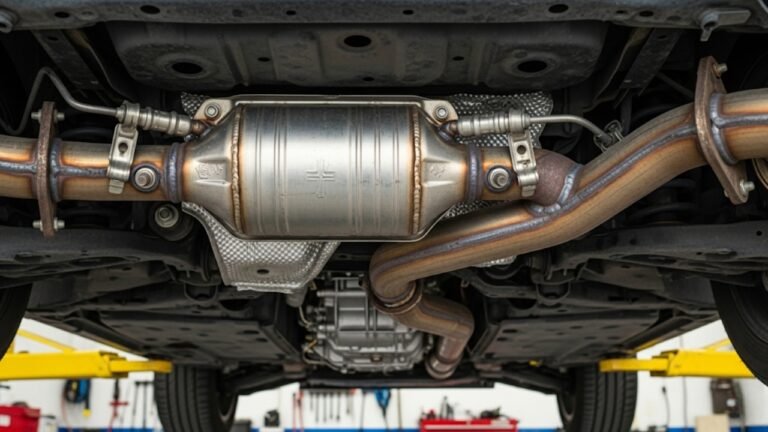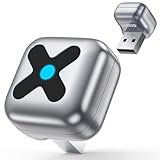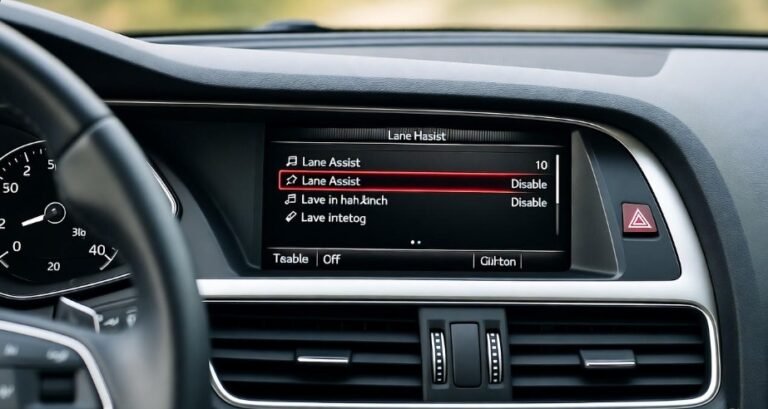How to Check Nissan CVT Transmission Fluid Level Without Dipstick: Expert Tips

Keeping your Nissan running smoothly requires attention to details that many drivers overlook. One of the most critical, yet often misunderstood aspects of vehicle maintenance, is the transmission fluid. For Nissan vehicles equipped with a CVT (Continuously Variable Transmission), the process of checking fluid levels is not as straightforward as pulling out a dipstick. Unlike traditional automatic transmissions, many Nissan CVTs do not feature a dipstick, which can leave owners feeling uncertain about whether their transmission fluid is at the correct level. Ignoring proper maintenance can lead to decreased performance, overheating, and even costly repairs. Fortunately, there is a reliable way to check your transmission fluid without a dipstick. By following the correct procedures and using careful observation, you can ensure that your Nissan CVT remains healthy, efficient, and long-lasting. In this guide, we will walk you through step-by-step expert tips on how to check Nissan CVT transmission fluid level without dipstick, helping you maintain optimal performance while avoiding common mistakes.
Understanding CVT Technology: Why Fluid Matters
Many drivers are familiar with conventional automatic transmissions that use fixed gears, but a CVT operates on a completely different principle. The Continuously Variable Transmission is designed to provide smooth acceleration without discrete gear shifts, using a system of variable-diameter pulleys and a steel belt to create an infinite number of gear ratios. This design improves fuel efficiency and provides a smoother driving experience, but it also makes the transmission more sensitive to fluid levels and fluid quality. Unlike a traditional transmission, a CVT relies on precisely formulated fluid to lubricate the pulleys, cool the system, and transmit power efficiently. Too little fluid can cause slipping, overheating, and premature wear, while too much fluid can create foaming and erratic performance. Since many Nissan CVTs lack a dipstick, owners cannot simply pull a stick and check the level visually. Understanding the critical role of CVT fluid is the first step toward mastering the maintenance process and ensuring your transmission operates as intended over the long term.
Preparing for the Fluid Check
Before you attempt to check your Nissan CVT transmission fluid level, preparation is essential. First, safety is paramount. Make sure your vehicle is parked on a level surface, and the engine is off while you gather tools and equipment. Even small errors during this process can lead to incorrect readings or accidents. Essential items include gloves, safety glasses, a clean cloth, a fluid pump (if needed), and the manufacturer-recommended CVT fluid. Using the correct fluid is critical because Nissan CVTs are highly sensitive to variations in viscosity and chemical composition. The wrong fluid can lead to catastrophic transmission failure and may void your warranty. Additionally, ensure your car has been driven long enough for the transmission to reach operating temperature, as fluid expands when warm, and cold readings may be inaccurate. Proper preparation not only safeguards your safety but also ensures an accurate reading, which is vital for maintaining your Nissan CVT’s efficiency and longevity.
Step-by-Step Guide to Checking Nissan CVT Fluid Without a Dipstick
Now comes the heart of the process: checking your Nissan CVT transmission fluid without a dipstick. Begin by warming up the transmission by driving the vehicle for about 10 to 15 minutes. This ensures the fluid is at the correct operating temperature for an accurate measurement. Next, securely lift the vehicle using ramps or a hydraulic lift, making sure it is perfectly level to avoid skewed readings. Locate the fill/check plug on the side of the CVT transmission. Slowly remove this plug, and observe whether fluid begins to trickle out. If the fluid flows freely, the level is correct. If no fluid comes out, you need to add the proper Nissan CVT fluid gradually. Take care not to overfill, as this can create pressure problems inside the transmission. After adjustment, reinstall the plug securely, ensuring a tight seal. Following this method allows Nissan owners to confidently check fluid levels without the traditional dipstick while protecting the transmission from unnecessary stress or damage.
Expert Tips for Accurate Measurement
Even after mastering the basic steps, subtle nuances can make a huge difference in the accuracy of your fluid check. First, always measure the fluid when it is fully warmed up, as cold fluid will give an artificially low reading. Second, ensure the car is on a perfectly level surface; even a slight incline can throw off the results. Third, pay attention to the fluid’s color and smell: healthy Nissan CVT fluid is usually clear or light red, with a faint, slightly sweet smell. Dark, burnt-smelling fluid indicates potential overheating or contamination and should be replaced immediately. Finally, take your time during the measurement. Rushing through the process can lead to under- or overfilling, both of which may harm your transmission. By implementing these expert tips, Nissan owners can confidently maintain optimal CVT performance while extending the life of their transmission.
Recognizing the Signs of Accurate Fluid Level
Checking the fluid level is only part of the process—knowing whether it’s correct is equally important. With a Nissan CVT transmission, the trickle test at the fill plug is a reliable indicator: if fluid begins to gently flow out once the plug is removed, the level is generally correct. However, subtle indicators can provide additional confirmation. For instance, normal fluid should be consistent in texture—neither watery nor excessively thick. When driving, a properly filled CVT exhibits smooth acceleration and no unexpected slipping or hesitation. Any unusual noises, shuddering, or delayed response may suggest that fluid levels are too low or that the fluid itself is degraded. Experienced Nissan owners often develop a “feel” for proper transmission behavior, which, combined with visual checks, creates a thorough approach to maintaining fluid health. Paying attention to these signs ensures that your CVT operates efficiently while preventing damage that could result from neglecting fluid levels.
What Fluid Color and Smell Reveal About CVT Health
While checking the level of CVT fluid is essential, assessing its color and odor provides additional insight into the transmission’s condition. Fresh, healthy Nissan CVT fluid is typically a bright red or light amber color, with a slightly sweet smell. Over time, normal use causes the fluid to darken, but burnt or blackened fluid is a warning sign of overheating or internal friction. A sour or metallic smell can indicate contamination or excessive wear. Paying attention to these sensory cues allows you to act before minor issues become major repairs. Many Nissan owners overlook this step, relying solely on level measurements, but understanding fluid characteristics can be just as important as checking the quantity. Regular monitoring of color and smell helps detect early signs of transmission stress, ensuring your CVT remains smooth, responsive, and long-lasting.
Troubleshooting Common CVT Fluid Issues
Even with careful maintenance, CVT fluid issues can arise, and recognizing them early is crucial. Common problems include overheating, contamination, and low fluid levels. Overheating often results from aggressive driving, towing, or stop-and-go city traffic, which can degrade the fluid faster than expected. Contamination might occur from dirt or water entering the system during improper maintenance, while low fluid levels can result from unnoticed leaks. If you encounter any of these issues, the first step is to check the fluid level using the fill plug method, ensuring the transmission is at operating temperature. Next, inspect the fluid’s color and smell, and consider replacing it if abnormal. For persistent issues, consulting a professional Nissan technician is recommended. Proactive troubleshooting prevents costly repairs and helps maintain the transmission’s smooth, efficient performance.
Adjusting Fluid Levels Without a Dipstick
Adjusting Nissan CVT transmission fluid without a dipstick requires care and precision. Start by identifying the correct fluid type from the owner’s manual—using the wrong fluid can seriously damage the CVT. If the level is low, add the recommended fluid gradually through the fill plug until a gentle trickle flows out, signaling the correct level. Avoid overfilling, as excess fluid can foam and disrupt transmission operation. After adding fluid, run the engine briefly, then recheck the level to ensure it remains optimal. This method, though slightly more complex than using a dipstick, is highly effective when done correctly. Many Nissan owners find that following these manufacturer-approved techniques provides confidence in maintaining fluid levels without risking transmission health, allowing their vehicles to operate at peak efficiency for years.
Maintaining Optimal CVT Performance
Maintaining Nissan CVT transmission health goes beyond occasional fluid checks. Regular inspections, timely fluid replacements, and observing driving habits all play a role in prolonging the life of your CVT. Nissan recommends checking fluid levels approximately every 30,000 miles, but vehicles driven in harsh conditions—like frequent stop-and-go traffic, mountainous areas, or heavy towing—may require more frequent attention. Always use genuine Nissan CVT fluid, as substitutes can compromise lubrication and system efficiency. Additionally, avoid aggressive driving patterns that place undue stress on the transmission. By consistently monitoring fluid levels and adhering to preventive maintenance schedules, you not only protect your vehicle from premature wear but also enhance fuel efficiency and ensure smooth, responsive performance.
Frequently Asked Questions (FAQs)
1. Can I check Nissan CVT fluid without lifting the car?
No. To accurately check the fluid level, the vehicle must be on a level surface, and the fill plug is usually located on the side of the transmission, requiring the car to be safely lifted. Attempting to check it without proper positioning can give inaccurate readings.
2. How often should I check my CVT fluid?
Nissan recommends approximately every 30,000 miles under normal conditions. For severe driving conditions, check more frequently to prevent overheating or fluid degradation.
3. Can I use automatic transmission fluid instead of Nissan CVT fluid?
No. CVTs require a specific fluid formulated for their pulley and belt system. Using the wrong type can cause serious damage and void your warranty.
4. What if the fluid flows out too quickly when I remove the fill plug?
This could indicate overfilling. Remove excess fluid carefully and ensure the engine is at operating temperature when checking again.
5. My CVT fluid looks dark but smells fine—should I replace it?
Color change alone may indicate normal aging, but if the fluid smells burnt or metallic, replacement is necessary. Always consult your owner’s manual or a professional technician for guidance.
6. Can I perform this check myself, or should I see a professional?
While the process can be done by a confident car owner, if you’re unsure, seeking a professional’s help prevents mistakes that could harm the transmission.
7. What are the signs of low CVT fluid while driving?
Signs include delayed acceleration, slipping, shuddering, or unusual noises. Low fluid can quickly damage the transmission if not addressed promptly.
8. Is it normal for CVT fluid to have a sweet smell?
Yes. Healthy CVT fluid typically has a faint, slightly sweet scent. Any burnt, sour, or chemical-like smell indicates a problem.
Conclusion
Learning how to check Nissan CVT transmission fluid level without dipstick may feel intimidating at first, but with proper preparation, careful observation, and attention to detail, it becomes a straightforward and rewarding task. By understanding CVT technology, monitoring fluid color and smell, and following expert-approved steps, you can maintain optimal transmission performance, avoid costly repairs, and extend the life of your vehicle. Regular maintenance is not just about preserving mechanical health—it’s about peace of mind, knowing that your Nissan will continue to provide smooth, efficient, and reliable performance for years to come. Being proactive and attentive to fluid levels ensures that your driving experience remains seamless, safe, and stress-free, reflecting the true value of owning a Nissan with CVT technology.






